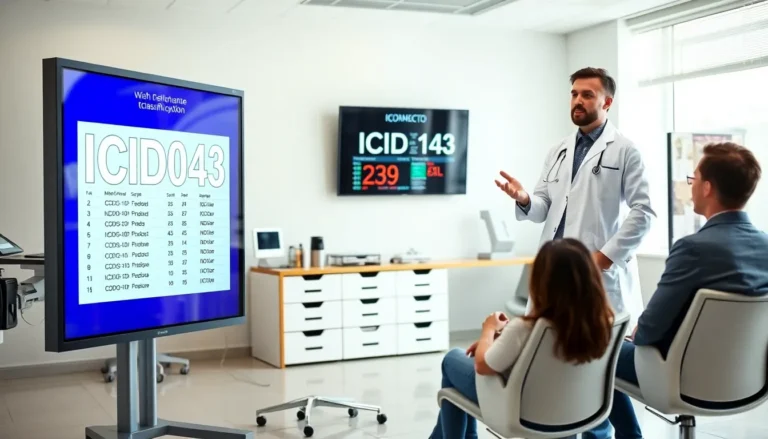Table of Contents
ToggleIn a world where change is the only constant, education systems are no exception. Schools and universities are navigating a whirlwind of reforms, technology integration, and evolving student needs. The challenge? Mastering the art of education change management. It’s not just about flipping a switch; it’s about orchestrating a symphony where every stakeholder plays in harmony.
Imagine trying to teach a group of cats to follow a new curriculum—chaotic, right? Yet, that’s often how change feels in education. With the right strategies, however, institutions can turn that chaos into a well-choreographed performance. By embracing effective change management, educators can not only survive the storm but thrive in it, ensuring that both teachers and students come out on top. Let’s dive into how to make educational change a smooth ride instead of a bumpy rollercoaster.
Understanding Education Change Management
Education change management involves systematic approaches to handling educational reforms, technological advancements, and varying student needs. Institutions focus on coordinating efforts across all stakeholders, ensuring seamless transitions within the learning environment.
What Is Education Change Management?
Education change management refers to the structured process of managing changes within educational institutions. This process includes planning, implementing, and evaluating changes to improve teaching and learning. Successful change management requires clear communication, stakeholder engagement, and a focus on desired outcomes. By prioritizing these elements, educational leaders can create an adaptable atmosphere where innovations thrive.
Importance of Change Management in Education
Effective change management plays a crucial role in educational success. Organizations experience enhanced collaboration and trust when they manage change strategically. Research indicates that well-managed transitions lead to higher levels of teacher satisfaction and student achievement. Change management also mitigates resistance by addressing concerns from educators and students. Institutions that prioritize change management often see quicker adoption of new practices and technologies. Ultimately, the importance of change management lies in fostering an environment conducive to continuous growth and improvement.
Key Principles of Education Change Management
Effective education change management relies on several key principles that facilitate successful transitions. These principles shape the process and guide stakeholders toward common goals.
Leadership and Vision
Strong leadership establishes a clear vision for change. Leaders articulate expectations and inspire others to embrace new directions. Inclusive decision-making enhances commitment among staff. A shared vision aligns efforts across the institution, creating a unified approach. By demonstrating confidence in the vision, leaders foster an environment that encourages innovation and resilience during the change process.
Stakeholder Engagement
Engaging stakeholders ensures that all voices contribute to the change initiative. Participation from teachers, administrators, and parents provides valuable insights and fosters a sense of ownership. Regular communication keeps stakeholders informed and involved, allowing for feedback that can shape policies and practices. Building trust among stakeholders enhances collaboration and significantly boosts the likelihood of successful change. Creating spaces for dialogue promotes transparency and reinforces the commitment to educational improvement.
Strategies for Effective Change Implementation
Effective change implementation in education hinges on strategic planning and robust support systems. Educators, administrators, and stakeholders must collaborate to facilitate comprehensive transitions.
Developing a Change Management Plan
Creating a change management plan forms the backbone of successful educational reforms. The plan should outline specific goals, timelines, and resources. Establishing clear objectives allows institutions to track progress effectively. Stakeholder involvement in plan development ensures diverse perspectives contribute to the process. Prioritizing communication throughout this phase fosters transparency and builds trust. Regular updates on progress help keep everyone informed and engaged. Adjustments based on feedback demonstrate adaptability, reinforcing commitment among stakeholders.
Training and Support for Educators
Providing training and support for educators is crucial in the change process. Tailored training sessions equip educators with the necessary skills and knowledge. Regular workshops and professional development opportunities improve educator confidence in new methods. Continuous support from administrators encourages a culture of innovation and exploration. Collaborative environments where educators can share experiences enhance learning and growth. As challenges arise, accessible resources such as mentorship programs offer additional guidance. Investing in educators directly correlates with improved outcomes for students and schools.
Challenges in Education Change Management
Education systems face significant obstacles when adapting to change. These challenges often hinder the effective implementation of new strategies.
Resistance to Change
Resistance to change emerges as a primary challenge. Educators may express skepticism about new initiatives, fearing disruptions to established routines. Additionally, stakeholders often become attached to familiar practices. When individuals fear the unknown, adapting becomes problematic. Overcoming this resistance requires active engagement and transparent communication. Leaders must foster an inclusive environment where concerns are addressed. By involving stakeholders in the change process, institutions build trust. Implementing pilot programs can also prove beneficial, showcasing the advantages of new approaches and easing the transition for reluctant participants.
Resource Allocation Issues
Resource allocation issues complicate educational change management. Budget constraints frequently limit the availability of funds for necessary training and materials. When schools lack adequate resources, implementing new programs becomes challenging. Technology integration suffers without sufficient investment. Prioritizing essential areas ensures that institutions allocate funds strategically. Communicating financial needs to stakeholders helps garner support for resource investment. Establishing partnerships with organizations can supplement resources. Tracking the impact of resource allocation on change initiatives enables institutions to make informed adjustments for effective implementation.
Case Studies in Education Change Management
Education change management thrives on practical examples illustrating both successes and setbacks in the field. Studying these case studies helps institutions refine their approaches to change.
Successful Implementations
One notable case of effective change management occurred in a large urban school district. Implementation of a new curriculum focused on project-based learning significantly boosted student engagement. Leadership emphasized inclusive decision-making and provided ample training support for educators. As a result, teachers felt more confident in their ability to deliver new material. Regular feedback sessions allowed for continuous improvement and adaptation of the curriculum, aligning with student needs. Enhanced student achievement statistics verified the program’s success, showing a 20% increase in overall test scores after the implementation year.
Lessons Learned from Failures
Challenges often provide key insights into the change management process. A mid-sized school faced setbacks when it attempted to integrate technology without sufficient training. Teachers expressed frustration due to inadequate support, leading to low adoption rates. Failure to involve all stakeholders early on created a sense of skepticism, undermining effort. Consequently, the district observed minimal improvement in technological engagement among students. Significant budget constraints further complicated the issue, limiting necessary resources. These experiences underscored the importance of clear communication and robust training initiatives in future change efforts.
Navigating the complexities of education change management requires a strategic approach that prioritizes collaboration and communication. By fostering an environment where all stakeholders feel valued and engaged, institutions can effectively manage transitions and overcome resistance.
Strong leadership and clear vision play pivotal roles in guiding these efforts, ensuring that everyone is aligned with the goals of the change initiative. Continuous professional development and resource allocation further enhance the likelihood of successful implementation.
Ultimately, embracing change with a structured plan not only improves educational outcomes but also cultivates a culture of innovation that benefits students and educators alike.







